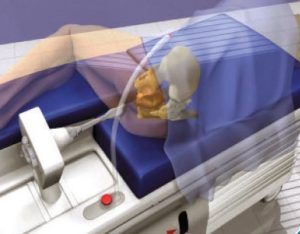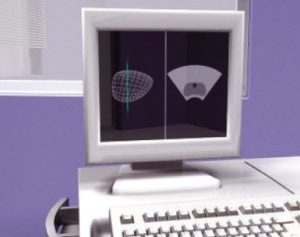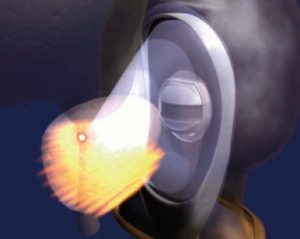HIFU Treatment
A recently approved therapy called HIFU (high intensity focused ultrasound) is now available. This has been used in Europe for 20 years and is now available here. It is very effective and I prefer it to cryosurgery. High Intensity Focused Ultrasound (HIFU) is a minimally-invasive ablation therapy which can be used to treat localized prostate cancer.
The procedure requires only a short hospital stay and has low complication rate. The prostate tissue will be destroyed by thermal effect of HIFU, therefore there is no radiation involved.

We will be using the Ablatherm HIFU device to ablate prostate tissue. The doctor inserts a probe into the rectum. This probe includes an imaging component which allows to review the treatment area on a computer screen. The probe also includes a transducer which emits the focused ultrasound waves. The doctor inputs a treatment plan into the computer which then controls and aims the ultrasound waves. These are focused with extreme precision into the targeted cancerous cells in the prostate causing a very brief rise in the temperature (around 85 C). The targeted tissue is then instantly and effectively destroyed, while the surrounding tissue is preserved. The Ablatherm HIFU machine has numerous safety checks which are constantly monitored throughout the procedure to ensure the patient safety. This means that the treatment is always deliver to the same high standards and quality.

The procedure is done under general anesthesia to ensure you remain completely still and you will experience no pain. You will lie on your right hand side and the doctor will place it a gel- coated probe into your rectum. The doctor locates your prostate and the area to be treated. The HIFU proceed you can then start – 400 to 600 shots of high intensity focused ultrasound waves are generally given. The procedure can last between one and three hours.
The prostate swells after treatment and presses on the urethra (canal which discharges urine from the bladder) so catherization to remove urine is necessary until the swelling subsides.
To reduce the need for catherization after treatment, a transurethral resection of the prostate (TURP) can be performed before the procedure. TURP involves removing the part of the prostate which presses on the urethra.
Pain at the end of the treatment is rare, although most patients feel a slight discomfort which disappears after a few days. The procedure is minimally invasive so there are no wounds and patients do not experience the burning sensation often associated with radiotherapy.
Most patients can go back to eating normal food the evening after treatment and are discharged from the hospital the next day. The urinary catheter is generally removed three or four days later. Medication may be prescribed after HIFU to prevent any infection of the urethra or bladder. In the period after treatment you may experience some discomfort including mild bleeding at the start of urination, frequent and sometimes urgent urination, and urine leakage during physical exertion or coughing and sometimes the elimination of dead cells in the urine. Infections with fever are rare but possible and require antibiotics. The side effects disappear in the weeks following the treatment.
Step by step of the HIFU Treatment
- The patient lies down on his right side and stays in this position throughout the treatment.
- Due to the closeness of the prostate to the rectal wall, the treatment is performed optimally using the transrectal approach.

- The probe is lubricated and then inserted into the rectum via the anus. The prostate is then accessible for ultrasound ablation.
- The imaging transducer in the middle of the probe allows a very precise three-dimensional reconstruction of the area to be treated and to be seen on a monitor

- The whole prostate is scanned and visible on the computer screen
- On the screen, the surgeon plans each step of the treatment with a microscope precision.


- Finally the machine produces HIFU waves which destroy the cancer cells.

“At last a procedure where I don’t need to use my gloves”
Contact Info
Scurlock Tower Suite 2100
6560 Fannin Street
Houston, Texas 77030
Phone: (713) 441-6455
Fax: (713) 790-4456
info@drbrianmiles.com

